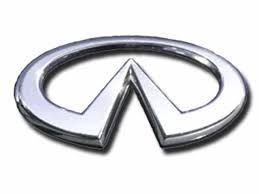M35x AWD V6-3.5L (VQ35HR) (2010)
/Page-1065001.png)
Repairs and Inspections Required After a Collision: Service and Repair
Seat Belt Inspection
SEAT BELTS
Seat Belt Inspection
AFTER A COLLISION
WARNING:
Inspect all seat belt assemblies including retractors and attaching hardware after any collision.
NISSAN / INFINITI recommends that all seat belt assemblies in use during a collision be replaced unless the collision was minor and the belts
show no damage and continue to operate properly. Failure to do so could result in serious personal injury in an accident. Seat belt assemblies
not in use during a collision should also be replaced if either damage or improper operation is noted. Seat belt pretensioned should be
replaced even if the seat belts are not in use during a frontal collision in which the air bags are deployed.
Replace any seat belt assembly (including anchor bolts) if:
-
The seat belt was in use at the time of a collision (except for minor collisions and the belts, retractors and buckles show no damage and continue to
operate properly).
-
The seat belt was damaged in an accident. (i.e. torn webbing, bent retractor or guide, etc.)
-
The seat belt attaching point was damaged in an accident. Inspect the seat belt attaching area for damage or distortion and repair as necessary
before installing a new seat belt assembly.
-
Anchor bolts are deformed or worn out.
-
The seat belt pretensioner should be replaced even if the seat belts are not in use during the collision in which the air bags are deployed.
PRELIMINARY CHECKS
1. Check the seat belt warning lamp/chime for proper operation as follows:
a. Switch ignition ON. The seat belt warning lamp should illuminate. Also, the seat belt warning chime should sound for about six seconds.
b. Fasten driver's seat belt. The seat belt warning lamp should go out and the chime (if sounding) should stop.
2. If the air bag warning lamp is blinking, conduct self-diagnosis using CONSULT-III, and air bag warning lamp. See: Air Bag Systems/Testing and
Inspection/Reading and Clearing Diagnostic Trouble Codes.
3. Check that the seat belt retractor, seat belt anchor and buckle bolts are securely attached.
4. Check the shoulder seat belt guide and shoulder belt height adjuster for front seats. Ensure guide swivels freely and that webbing lays flat and does
not bind in guide. Ensure height adjuster operates properly and holds securely.
5. Check retractor operation:
a. Fully extend the seat belt webbing and check for twists, tears or other damage.
b. Allow the seat belt to retract. Ensure that webbing returns smoothly and completely into the retractor. If the seat belt does not return smoothly,
wipe the inside of the loops with a clean paper cloth. Because dirt built up in the loops of the upper anchors can cause the seat belts to retract
slowly.
c. Fasten the seat belt. Check the seat belt returns smoothly and completely to the retractor. If the webbing does not return smoothly, the cause
may be an accumulation of dust or dirt. Use the "SEAT BELT TAPE SET" and perform the following steps.
Inspect the front seat belt though-anchor
1. Pull the seat belt out to a length of 500 mm (19.69 in) or more.
2. Use a clip or other device to the fix the seat belt at the center pillar webbing opening.
3. Pass a thin wire though the though-anchor webbing opening. Hold both ends of the wire and pull it tauntly while moving it up and down several
times along the webbing opening surface to move matter stuck there.
4. Any dirt that can not be removed with the wire can be removed by cleaning the opening with a clean cloth.
5. Apply tape at the point where the webbing contacts the though-anchor webbing opening.
NOTE:
Apply the tape so that there is no looseness or wrinkling.
6. Remove the clip fixing the seat belt and check that the webbing returns smoothly.
6. Repeat steps above as necessary to check the other seat belts.
SEAT BELT RETRACTOR ON-VEHICLE CHECK
Emergency Locking Retractors (ELR) and Automatic Locking Retractors (ALR)
NOTE:
All seat belt retractors are of the Emergency Locking Retractors (ELR) type. In an emergency (sudden stop) the retractor will lock and prevent the
webbing from extending any further. All 3-point type seat belt retractors except the driver's seat belt also have an Automatic Locking Retractors
(ALR) mode. The ALR mode (also called child restraint mode) is used when installing child seats. The ALR mode is activated when the seat belt is
fully extended. When the webbing is then retracted partially, the ALR mode automatically locks the seat belt in a specific position so the webbing
cannot be extended any further. To cancel the ALR mode, allow the seat belt to fully wind back into the retractor.
Check the seat belt retractors using the following test(s) to determine if a retractor assembly is operating properly.
